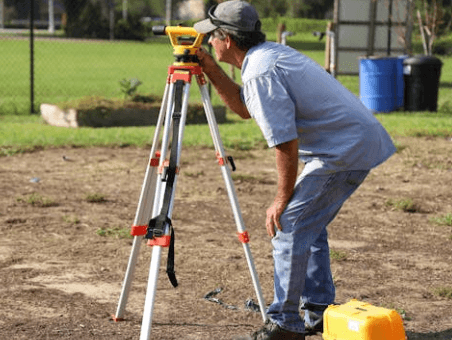Obtaining the legal description of a property is a crucial step, whether you’re buying, selling, or resolving disputes. Did you know that over 85% of property transactions rely on accurate legal descriptions to prevent boundary issues? Legal descriptions are more than an address; they detail the exact location and boundaries of the land. Resources like deeds, public records, and survey maps can help you understand this information. Steve Daria and Joleigh, renowned real estate investors and land buyers for cash, have helped countless individuals streamline this process with their expertise. If you’re unsure how to find the legal description of property or need professional guidance, they are here to assist you. Don’t wait—book a free discussion with them today to ensure your property transactions are stress-free. Understanding how to find the legal description of property can help you save time, reduce costs, and avoid potential conflicts down the line.
Key Points
- Check the Property Deed: One of the simplest ways to locate a property’s legal description is by examining its deed. It typically includes key details about the boundaries and dimensions of the land.
- Access Public Records: Local government offices, such as the county recorder’s office or property assessor, often store property records. These records can provide the legal description along with other important property documents.
- Consult with a Surveyor: A professional surveyor can measure and map your land to provide an accurate legal description. This is especially helpful if the description of existing documents is unclear or outdated.
- Use Online Databases: Many counties now offer online access to property records and maps. By searching through these tools, you can locate the legal description without visiting a physical office.
- Seek Professional Help: If you’re facing challenges, experts like real estate attorneys or professionals like Steve Daria and Joleigh, seasoned land buyers for cash, can assist. They provide professional expertise to ensure you obtain a precise and accurate legal description of your property.
What is a legal description of property, and why is it important?
A legal description of the property is a detailed written record that precisely identifies a specific piece of land.
Unlike a street address, which can sometimes change or be vague, a legal description provides exact details about the property’s location, boundaries, and dimensions.
These descriptions are often found in deeds, property records, or land surveys and are essential for clear property identification.

Legal descriptions are vital in property transactions, ensuring buyers, sellers, and lenders understand exactly what land is being transferred or financed.
Without a proper legal description, it’s easy for disputes to arise over property lines, ownership, or usage rights.
They also help clarify boundaries when neighboring properties are involved, avoiding potential conflicts.
If you’re uncertain about how to find the legal description of property, resources like public records or professional assistance can help.
This information is helpful and a key step in protecting your property rights and interests.
Get Started: Get Your Cash Offer Below…
We are direct land buyers. There are no commissions or fees and no obligation whatsoever. Start below by sharing where your property is and where we can send your offer…
How does a legal description differ from a property address?
A legal description and a property address might refer to the same piece of land, but they serve different purposes.
A property address is mainly used for everyday identification, such as locating a home or receiving mail.
It’s easier to remember and is a general guide for finding a location. However, a legal description is a much more precise document for official and legal purposes.
It describes the boundaries, dimensions, and unique details of the property in a way that leaves no room for error.
Legal descriptions are vital during property transactions, disputes, or ownership transfers, as they ensure all parties clearly understand the exact land being referenced.
Unlike property addresses, legal descriptions stay consistent over time, even if street names or numbers change.
When figuring out how to find the legal description of property, resources like deeds, surveys, and public records are incredibly helpful.
While a property address is important for practical use, the legal description is crucial for ensuring accuracy in legal and financial matters.
What documents usually contain a legal description of property?
- Property Deeds: Property deeds are among the most common sources of legal descriptions. These official documents outline the transfer of property ownership and detail the land’s exact boundaries.
- Mortgages: Mortgages often include the legal description of the property as part of the loan agreement. This ensures lenders and borrowers know precisely what land is used as collateral.
- Title Insurance Policies: When you purchase title insurance, the policy will include the legal description to confirm the property being insured. This helps protect buyers from future ownership disputes or claims.
- Survey Reports: A survey report provides an accurate and detailed map of a property, including its legal description. Surveyors use exact measurements to define property lines, ensuring no misunderstandings.
- Tax Assessments: Local tax assessment records often include a legal property description. These records identify the property for tax purposes and ensure taxes are applied to the correct location.
Are there online tools or databases to access my property’s legal description?
Yes, online tools and databases are available to help you access your property’s legal description.
Many county or municipal websites provide public access to property records, often including legal descriptions.
These tools are usually easy to use—you can search by your address, parcel number, or owner’s name to find the information you need.
Some private platforms, like real estate websites or mapping services, also offer access to property details, though they may charge fees or require subscriptions.
Online tools offer the advantage of saving time and providing the convenience of conducting searches from the comfort of home, eliminating the need for office visits.
However, keep in mind that not all information may be up-to-date, and some counties may have limited online records.
If you’re unsure how to find the legal description of property using these tools, you can often find step-by-step guides on these websites to help.
While online databases are useful, it’s always a good idea to verify the information through official sources like deeds or surveys to ensure accuracy.
What are the steps to confirm the accuracy of my property’s legal description?
1. Review Your Property Deed
The first step is to locate your property deed, as it is the most official document containing your legal description.
Read through the description carefully and compare it to what you know about your property boundaries.
If you’re unsure how to find the legal description of the property in your deed, you can check with your local recorder’s office or ask a real estate professional to help you.
2. Get a Recent Survey Report
A licensed surveyor can provide you with a precise report of your property’s measurements and boundaries.
Compare the survey report with the legal description in your paperwork to ensure they match.
If you’re confused about how to find the legal description of the property for a surveyor to check against, you can use online property tools or consult public records for this purpose.

3. Search Public Records
Head to your county recorder’s office or their website to access the public records related to your property.
This is a useful way to double-check the accuracy of your legal description and confirm it matches what’s on file.
Searching public records can also teach you how to find the legal description of property, especially if you’re unfamiliar with where this information is stored.
4. Consult a Title Insurance Company
Title insurance companies specialize in reviewing and ensuring the accuracy of legal property details.
They can examine the legal description in your records and identify any potential issues or inconsistencies.
If you need assistance, they can also explain how to find the legal description of property through official channels and ensure everything is up-to-date.
5. Ask a Real Estate Attorney for Assistance
If discrepancies arise or you feel uncertain about the accuracy of your legal description, consulting a qualified real estate attorney is highly recommended.
They can review your documents and help you resolve any errors or conflicts.
An attorney can also assist if you’re unfamiliar with how to find the legal description of property and ensure it is legally correct for future use.
Who can help me update or correct a legal description error?
If you need to update or correct an error in your property’s legal description, several professionals can help you.
Real estate attorneys are top resources because they specialize in resolving legal issues with property documents.
A licensed surveyor can also provide a detailed survey report to verify or adjust property boundaries.
Title companies are another option; they review legal descriptions and help identify inconsistencies during property transactions.
First, it’s vital to understand how to find the legal description of property, which can often be done by reviewing deeds, public records, or survey documents.
Ensuring the description’s accuracy is crucial to avoid disputes and complications during a sale or purchase.
If the process seems overwhelming or you need professional guidance, Steve Daria and Joleigh—experienced real estate investors and land buyers for cash—are here to help.
Contact them today to make the process smooth and stress-free!
**NOTICE: Please note that the content presented in this post is intended solely for informational and educational purposes. It should not be construed as legal or financial advice or relied upon as a replacement for consultation with a qualified attorney or CPA. For specific guidance on legal or financial matters, readers are encouraged to seek professional assistance from an attorney, CPA, or other appropriate professional regarding the subject matter.
